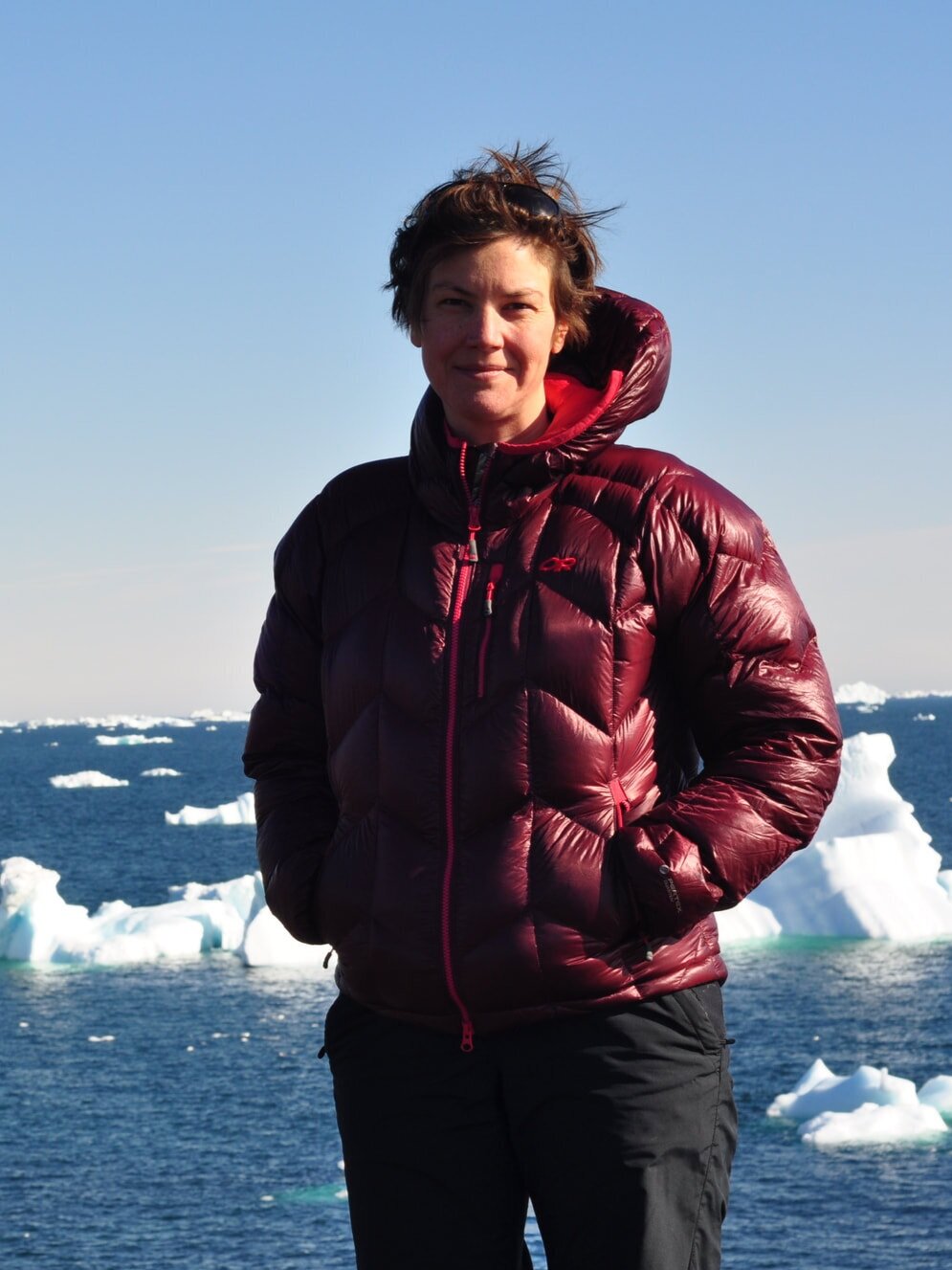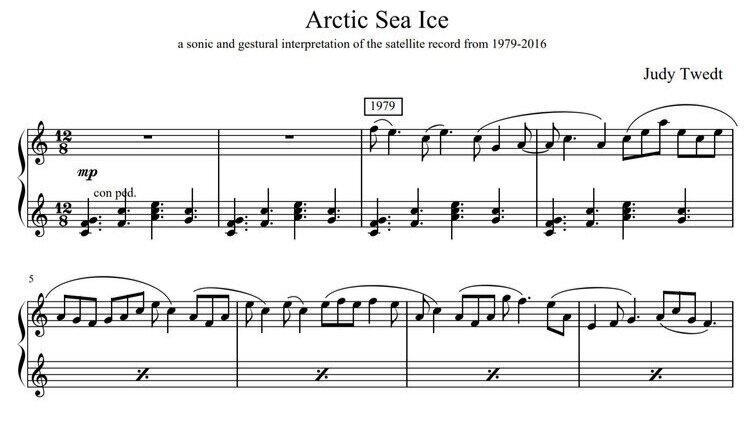Arctic Sea Ice
A sonic and gestural interpretation of the satellite record from 1979-2016
To fight climate change fatigue, researcher Judy Twedt hacked her data and used it to compose music. Her score lets us hear decades of Arctic sea ice loss in just minutes. In the beautiful and sometimes discordant piano piece, played by Jason Hardink, numerical scientific data becomes an emotional experience intended to reconnect us to the rhythm of the planet.

Judy Twedt is a fifth-generation Washingtonian who pursued a PhD in atmospheric sciences at the University of Washington to better understand the physics of global climate change. Three years into her research after the reversal of US participation in the Paris Climate Accord, she designed a new PhD program to develop novel ways to increase comprehension of our changing climate — by listening to the vital signs of the planet. She uses climate data to create climate soundtracks with three-dimensional, spatialized sound fields. These soundtracks explore tensions between the time-scales of human experience and that of climate change. She mixes art and science to promote public reckoning with our changing climate and its associated risks. She has received an NSF Graduate Research Fellowship; the University of Washington’s Husky 100 and Husky Green Awards for her work in sustainability and science communication. She enjoys swimming in the Puget Sound, making pies and addressing big multi-disciplinary problems.

“To create the projection mapping for the piano keyboard, I followed the score of Sea Ice very closely. My goal was to illuminate the keys, which represent the ice. Throughout the piece, the light moves to the left along with the performer’s right hand, demonstrating the decreasing ice levels over time. As in the score, this decrease accelerates rapidly towards the end of the piece, and by correlating the notes with the light mapping, I was able to make this alarming trend even more clear.”
– Audrey Lund

